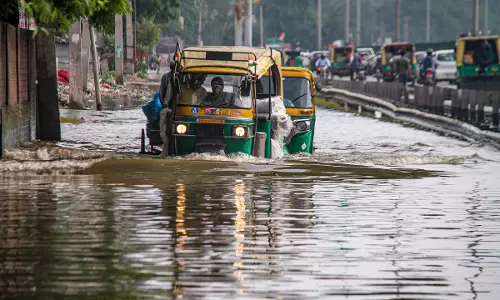Encroachments' demolition along Tansa pipeline face hurdles in 3 wards
According to the civic hydraulic department's recent report, over 7,000 structures are yet to be cleared from these three wards.;

Mumbai: The BMC’s drive to demolish encroachments along the Tansa pipeline remains a challenge in three administrative wards i.e. H/east ward (Bandra east), F/north ward (King’s Circle, Matunga) and L ward (Kurla). Civic officials said that cases of water theft and leakage were mainly detected from these areas where miscreants who resided alongside the pipeline punctured the pipeline and stole water. Not only was water lost, it also resulted in water contamination.
According to the civic hydraulic department’s recent report, over 7,000 structures are yet to be cleared from these three wards. A civic official said, “Removal of encroachments is a continuous process because the encroachers return after we demolish encroachments. However, once the proposed cycle track is commissioned, the problem will be solved permanently.”
The civic body had introduced two different methods of immediately identifying leaks; the sounding technique where a unit is placed on the road close to the pipeline which mutes other background noise only to record the sound of water, and the more recent helium gas technique. The new technique is based on helium’s chemical properties of being inert, non-toxic and not reacting with water. Once injected into the water supply line, helium is prone to escaping through the leaks. The massing helium above the supply line under scanner leads to detection of leaks, which can then be plugged.




